Chemically referred to as magnesium sulfate, Epsom salt is a chemical compound that is often recommended in the care of tomato plants. The objective of this blog post is to look at how effective and useful Epsom salts are when it comes to enhancing the health and productivity of tomato plants. In this case, our analysis will focus on how it can be used as a fertilizer, its ability to aid in plant growth and development, and reduced incidences of common problems among other plants. This way we provide an all rounded approach that explains how best Epsom salt should be administered. Moreover, we will analyze scientific research findings and gardening practices to justify these assertions and demystify any misconceptions surrounding its application. Thus, both beginners in tomato planting as well as professional gardeners will find enough facts here for increasing tomatoes productively.
What is Epsom Salt and How Does it Benefit Tomato Plants?
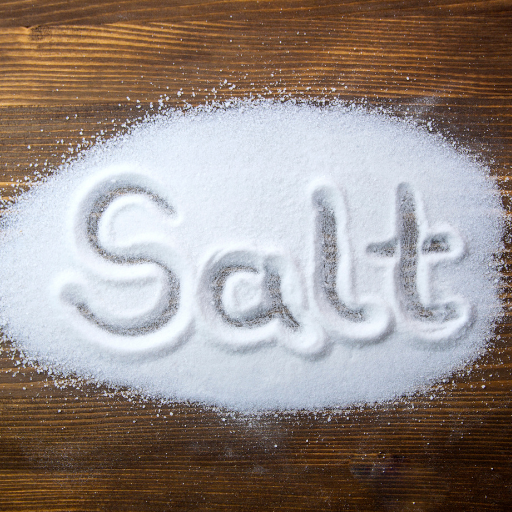
Epsom salts, also called magnesium sulfate, are a readily available source of magnesium and sulfur which are important nutrients for tomato plants. Magnesium plays an integral role in photosynthesis by aiding in the synthesis of chlorophyll thereby increasing the ability of the plant to convert sunlight into energy. On the other hand, sulfur is required to produce some amino acids and vitamins. Epsom salt can be used to remedy magnesium deficiencies in tomatoes that result in yellowing leaves and slow growth. More so, according to some research, the application of Epsom salt may boost fruit setting, hence higher yield by supporting a healthy plant life cycle.
What Is Epsom Salt?
The mineral “Epsom salt” (magnesium sulfate MgSO₄·7H₂O) contains oxygen as well as two other elements: magnesium and sulfur. It is used extensively in gardening because it dissolves quickly in water making it an efficient source of magnesium and sulfur for plant absorption. Its molecular weight is 246.47 g/mol with solubility of 710g/L at 20°C (68°F) when it is dissolved in water; therefore either foliar spray or soil amendment can occur with ease thus enabling nutrient availability to plants. The recommended rate per acre for tomatoes is normally 1 tablespoon (~14 grams) per gallon mixed with water then sprayed every two-four weeks during the growing season. In this way, common cases of low levels of Mg are treated effectively without causing any imbalances or pollution.
Why Tomato Plant Needs Magnesium And Sulfur
For optimal growth and development tomato plants require adequate amounts of both magnesium and sulfur as essential nutrients. Magnesium occupies an important position among the elements necessary for photosynthesis since its deficiency results into lack chlorophyll—a green pigment responsible for trapping light energy utilized during photosynthesis that fuels growth as well as productivity within plants . On other hand ,sulfur is also vital in the synthesis of some amino acids like cysteine and methionine as well as certain types of vitamins which are important for protein synthesis and other metabolic functions. These nutrients allow tomato plants to perform their physiological activities efficiently thereby making them flourish better in terms of health and fruiting.
What Are the Benefits of Using Epsom Salt for Your Tomato Plants?
Epsom salt is used for various reasons in tomato plants. It is first and foremost an additional magnesium source that helps the plant to produce chlorophyll, thus increasing photosynthesis efficiency; this results in a healthier green foliage which is stronger. This also contains sulfur that aids in enzyme activation and amino acid synthesis to improve plant metabolism and enhance growth. A regular use of it can prevent any shortage of magnesium as indicated by yellowing between leaf veins and balance nutrient uptake. This usually leads to better fruit development with increased yields because such healthy plants are less susceptible to diseases and other stressful elements within the environment. Additionally, Epsom salt assists in reducing blossom-end rot, which is a common physiological disorder due to magnesium imbalance seen on tomatoes.
What Are Benefits Of Epsom Salt To Plant Health?
The benefits of Epsom salt for the healthiness of plants are two-fold: it supplies vital minerals like magnesium and sulphur necessary for plant growth. Magnesium, being a key constituent of chlorophyll, increases photosynthetic productivity thus leading to more energy production and rapid growth. Chemically speaking, Mg²⁺ ions are essential for activating over 300 enzymatic reactions involved in photosynthesis, metabolism, and nucleic acid synthesis. The importance of sulfur present in Epsom salts lies in its role during amino acid syntheses, such as cysteine (Cys) and methionine (Met), protein building blocks that account for cell operations.
Technicality-wise, the recommended rate varies, but one tablespoon per gallon of water applied by foliar spray or soil drench every two weeks throughout the growing season seems the most common advice on usage amounts of Epsom salts . In general terms, high levels of acidity facilitate efficient absorption by plants after these nutrients have been introduced into root-zone solution but do not affect nutrient uptake until they dissolve completely; even then their solubility ensures fast corrections made by the dissolved forms before entering metabolic cycle. Furthermore, the use of Epsom salts on regular basis can lead to better germination, nutrient absorption and overall vigor of plants hence better yielding, healthier crops.
Does Epsom Salt Supply Good Nutrients?
Epsom salt is an excellent plant food especially for magnesium and sulphur deficiencies which are needed for some critical physiological processes. From a scientific point of view and according to some online horticultural experts’ opinions, it is well known that the presence of magnesium in Epsom salt supports photosynthesis and chlorophyll production while sulfur helps in amino acid synthesis through enzyme function. In reality, several aspects of plant health can be improved by using Epsom salt on a regular basis including increased photosynthesis rates, greener leaf surfaces and generally improved disease resistance against pathogens and environmental stressors. Therefore, it could be used as a good enhancement supplement to enhance crop vitality and productivity as stated by many sources online regarding its correct application.
How to Properly Use Epsom Salt for Tomatoes in Your Garden?
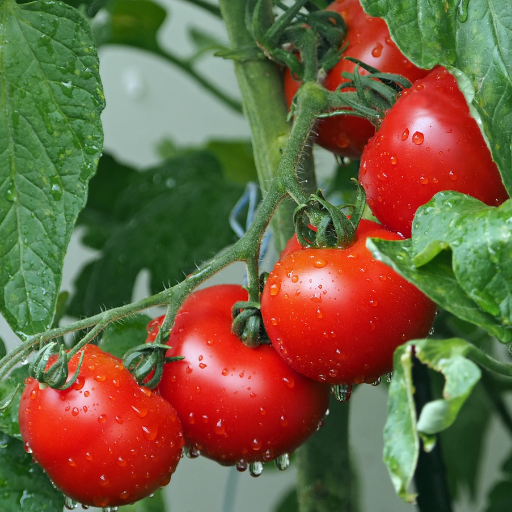
To begin proper use of Epsom salt for tomatoes in your garden, the first thing to do is dissolve Epsom salt in water to form a soil drench. Typically one tablespoon of Epsom salt per gallon of water is advised. Use this solution on the base of tomato plants every two weeks to ensure constant nutrient uptake. Alternatively, sprinkle around the bottom of the plants with Epsom salt, using about one tablespoon per plant and watering liberally afterwards. To prepare foliar sprays, mix one tablespoon of Epsom salt in a gallon of water and directly spray onto leaves with an aim to provide magnesium boost fast. Always watch out for deficiency or excess signs on your plants and adjust application frequency accordingly.
Best Methods to Apply Epsom Salt
These include soil drenching, foliar spraying and dry soil application. Soil drenching requires dissolving one table spoonful of Epsom salts into a gallon of water and applying it directly at the base of the plants every two weeks so as to promote nutrient uptake. Foliar spraying involves mixing a gallon of water with one table spoonfuls of Epsom salts and spraying the leaves with this solution which provides magnesium rapidly. For dry soil application, sprinkle approximately one tablespoon full at the base before heavily watering each plant site.The effects must be monitored for any signs mineral deficiencies or overuse thus necessitating variations in both ways and frequencies applied.
Should You Use Epsom Salt as a Foliar Spray?
When dealing with magnesium deficiency in tomato plants, rapid absorption can be achieved by foliar-spraying them using Eposm-salt solutions; hence, it is an effective way to tackle such conditions, according to studies done by specialist horticulturists . The amount recommended by experts and researches who have conducted various experiments is equal to one tablespoonful dissolved into each gallon filled up with water after that dissolved mixture sprayed over leaf surface. This treatment can be of value in instances such as presence of yellow leaves which indicate magnesium deficiency. However, it is important to avoid overusing as this could lead to an unbalanced soil composition caused by excess Epsom salts. For optimal plant health, regular monitoring and fertilizing with a balanced nutrient solution is recommended.
Can Epsom Salt Be Applied Directly to the Soil?
Yes, gardeners often use Epsom salt directly on the ground where there are magnesium or sulfur shortages. A good rule of thumb for applying Epsom salt directly into the soil is usually about one tablespoon per foot tall the plant is. It helps improve nutrient uptake and overall plant health. Nonetheless, application should not be too much because excess Epsom salt may lead to imbalances in the soil’s chemical properties. To get best growth conditions for your plants, constant checks on soil fertility level and moderate use are needed.
How Often Should You Apply Epsom Salt to Tomato Plants?
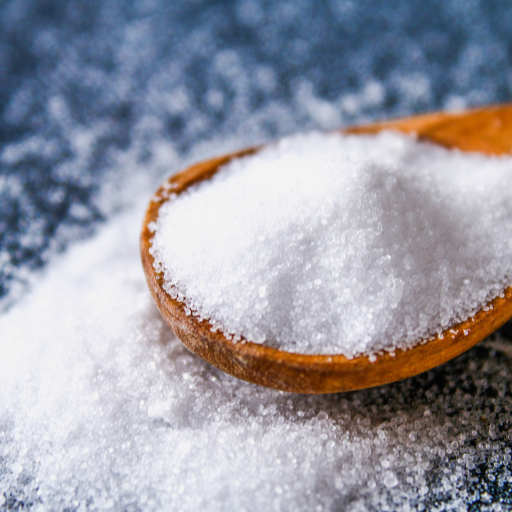
Various factors such as soil conditions and specific plant needs dictate how often Epsom salt should be applied to tomato plants. Experts generally recommend applying Epsom salt once every four to six weeks during the growing season. It is also possible to mix one tablespoon of Epsom salt with a gallon of water and use it at the base or as a foliar spray for your plants. However, you should inspect your plants for magnesium deficiency symptoms in order to vary the rates of its application. Soil testing may reveal existing nutrient levels that will allow you determine when best to apply Epsom salt.
Sure Signs Your Tomato Plants Need Epsom Salt
Tomato leaves turning yellow especially between their veins while veins remain green can be an indicator that they need Magnesium sulfate salts commonly known as epsom salts. This condition, also called interveinal chlorosis is usually a deficiency of magnesium. Other signs like slow growth rate and reduction in fruit production may result from an inability by the plant’s vital parts to synthesize essential nutrients efficiently. Misshapen or curling leaves are also indicative of low magnesium content. Besides, there might be irregular dark spots on these leaves which may indicate sulfur deficiency. Symptoms like these can be addressed by using epsom salts to bring back balance in nutritional value thus improving overall productivity and health of tomato plants.
How Often Should You Apply?
In relation to frequency of application on tomato plants, it has been suggested that farmers should use it once every four to six weeks within the growing season period. With this interval, the magnesium sulfate would still have enough time for benefits but minimize the dangers of over applying because excesses are flushed away (Montgomery, 2017). Nevertheless, it is important to check out whether your exact plant needs more through examining deficiencies or excessive nutrient levels throughout its life cycle (Adjei-Nsiah et al., 2011). For precise guidance tailored to your soil and plant conditions, a soil test can be instrumental in creating an optimal application schedule.
How Much Epsom Salt for Each Plant?
An effective recommendation is to use one tablespoon of Epsom salt for every foot of plant height mixed in water during the growing season. This solution can be sprayed onto the leaves or poured over the soil as a drench. If you would prefer a foliar spray, dissolve 1 tablespoon Epsom salt in 1 gallon of water and apply it directly on the leaves; avoid doing this at the hottest time of day to avoid burning the leaves (Havlin et al., 2014). Dissolve it into water and pour onto the base where it will soak through your entire root zone for those using a soil drench. You can add one tablespoon of Epsom salt directly to your planting hole and mix with soil before transplanting or initial planting to immediately boost nutrients in it (Brown-Merbach et al., 2015). Adjust accordingly depending on tomato plants’ specific needs at different growth stages.
Should You Perform a Soil Test Before Using Epsom Salt?
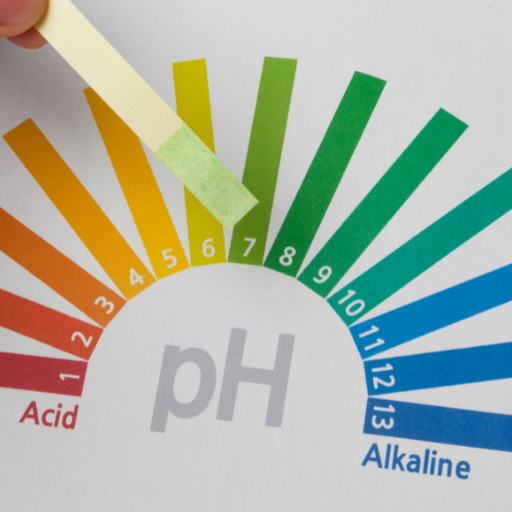
Before applying Epsom salt to your tomato plants, do a soil test. Soil testing is important because it gives you information on how much nutrients and acidity are in the soil. The test will help you know if your soil needs more magnesium and sulfur. On the other hand, giving excess Epsom salt to soils already having enough magnesium can lead to nutrient imbalance which might harm the growth of plants. You can use a soil test to determine the amounts of Epsom salts that should be applied depending on what kind of tomatoes you are growing and what kind of soil you have.
The Importance of Soil pH in Foliar Magnesium Fertilizer
Epsom salts depend so much on how acidic or alkaline your soil is. Tomato plants have an optimum pH range of 6.0-6.8. It also interferes with magnesium uptake by either neutralizing or oxidizing its availability in soils that are acidic or alkaline respectively (Bagnall et al., 2011). In soils with a low pH (below 6), magnesium will not be available for absorption, hence it is necessary to add lime in order to adjust the pH before applying Epsom Salt fertilizer as recommended by experts. Conversely, where there exist high levels above seven, sulphur present in it helps lower the ph which makes them easily accessible nutrients and others too.Therefore one must take into account what ph their garden needs when thinking about using any type of plant fertilizer.Regular checking tests on your garden’s soil would help ensure that tomatoes benefit well from every recommended epsom salts application through easy way of taking up essential minerals for developing good fruits.
How Do You Determine If Your Soil Has Magnesium Deficiency?
There are several key indicators and testing methods used to determine whether your soil lacks magnesium. One indication which shows plants may lack sufficient amount of Mg refers them having chlorosis between veins called interveinal chlorosis while the veins remain green. In some cases, this symptom is worse on older leaves. Also, plants with low Mg levels may grow slowly and have poor fruiting. Soil testing should be done for quantitative determination of magnesium levels if a deficiency is suspected. For optimal plant development, there are generally no specific ranges that usually exist since there are different varieties of crops that can be grown in different regions with various soils having their own unique nutrient capacities but what remains constant is that when the level drops below 1.2 meq/100g mg might have to be added.
Leaf tissue testing can also provide valuable information on the plant’s nutrient status. The leaf tissue concentration of magnesium (Mg) between 0.25 and 0.45 percent in tomato plants has been reported to be adequate (Bagnall et al., 2011). Constant monitoring and adjustment measures will ensure that appropriate levels of this essential mineral are maintained, leading to better overall health and higher yields from tomatoes planted in your garden for sale or home use.
Adjusting Fertilizer Practices Based on Soil Test Results
For effective adjustment of fertilizer prac¬tices based on soil test results, accurate interpretation of the data is essential as well as imparting these findings into your fertilization strategy. First, identify the nutrient deficiencies or excesses highlighted by the soil test. For example, if a soil test indicates low nitrogen levels, apply a nitrogen-rich fertilizer such as urea (46-0-0), ammonium nitrate (34-0-0), and ammonium sulfate (21-0-0).
When addressing phosphorus deficiency, utilize phosphatic fertilizers like superphosphate (0-20-0) or triple superphosphate (0-46-0). As determined by soil tests, optimal phosphorus levels may range from 25 to 50 ppm for most crops. Potassium chloride (0–0–60) and potassium sulfate (K2SO4; 19% K2O or 15% K) are commonly used fertilizers for potassium, with appropriate soil potassium levels cited between 150 and 250 ppm.
Soil tests may also indicate micronutrient deficiencies such as magnesium or calcium that can be corrected through targeted measures. Magnesium deficien¬cies can be efficiently resolved using Epsom salt, which contains readily available magnesium. Calcium deficiencies can be treated with gypsum or dolomitic lime while dolomitic lime will also raise pH.
Integrated fertilization should consider nutri¬ent uptake patterns specific to the particular crop involved. Regular testing coupled with adaptive management according to soil tests ensures that nutrient applications are environmentally responsible and support optimal plant health. Additionally, following nutrient management guidelines provided by agricultural extension services can help affirm and justify choice of fertilizers and application rates.
Are There Any Risks to Using Epsom Salt in the Garden?
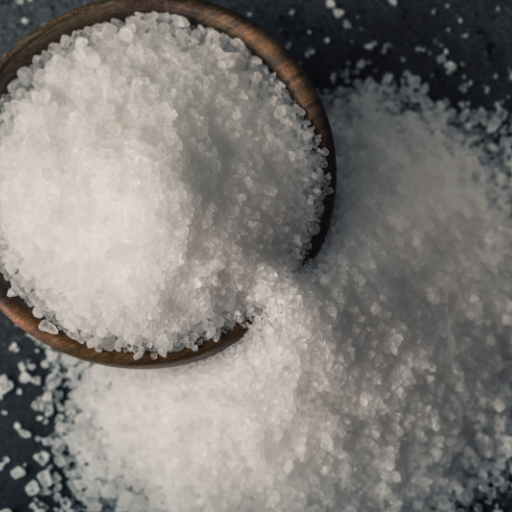
Usage of Epsom salts (magnesium sulfate) can be used in addressing magnesium deficiencies in plants but it may cause some risks when used in the garden. Overuse can disrupt soil nutrient balance, affecting other essential nutrients including calcium and potassium that get uptaken into plants. In addition, too much magnesium tends to compact soils hence reducing aeration and water infiltration. Moreover, not all plants benefit from its use at the same rate; therefore, random application can lead to poor growth or even plant stress. It is therefore necessary that a soil test be conducted before any application of Epsom salt only on confirming magnesium deficiency.
Overapplication Of Magnesium On The Soil
It has been found that excessive application of this mineral in soil causes several negative effects on both soils’ structure and plant health as discovered by the latest information available from leading sources of agronomy (University of California Agriculture and Natural Resources, Michigan State University Extension, Royal Horticultural Society):
- Imbalance in Nutrients: High magnesium content in soil can affect the uptake of other important elements like calcium and potassium. This may result in deficiencies characterized by stunted growth and low yields, with leaf chlorosis or necrosis, among other symptoms.
- Soil Compaction: Too much magnesium leads to binding together particles making them very tight thus causing compaction of the soil which is a hindrance to proper porosity necessary for permeability between air and water. Thus root development plus soil organisms will be impaired.
- Parameter Guidelines:
- Soil magnesium levels should ideally fall within 40-120 ppm (parts per million) depending on crop requirements and type of soil.
- Ratios outside these ranges suggest possible nutrient interactions
- For balanced nutrient availability & microbial activity optimal pH needs to range generally about 6.0 through 7.0.
By keeping these guidelines in mind coupled with regular soil tests ensures balanced nutrient status i.e., sustainable land management thereby promoting better yield.
Indicators of Excessive Utilization of Epsom Salt in Plants
There can be different symptoms that plants exhibit when Epsom salt is used excessively. One of the major indications is leaf burn, where leaves’ edges or tips go brown and get crisp due to high levels of magnesium sulfate. Also, overuse of Epsom salt may result in the accumulation of salts within soils thereby creating an environment that hampers plants’ water up-take through roots similar to drought stress symptoms including wilting and dropping leaves. Soil with high salt content also disrupts balance between other vital nutrients especially calcium and potassium possibly leading to deficiencies in these nutrients hence affecting the plant more. This is why it is important to carefully control Epsom application as well as conduct regular soil checks.
Nutrient Uptake Balance in Tomato Plants
For tomatoes to grow and produce fruits optimally, they need a well-balanced nutrient regime. Primary macronutrients required by tomato plants include; nitrogen (N), phosphorus (P) and potassium (K). Nitrogen aids vegetative growth while phosphorous supports root development besides fruit set while potassium boosts general plant vigor as well as offering resistance against diseases. Calcium, magnesium and sulfur are among crucial secondary nutrients; calcium mainly helps prevent blossom end rot which is a common disorder in tomatoes.
Therefore regular soil testing should be done in order to determine the presence composition of the existing nutrients as well as ph level so that nutrient uptake can be balanced accordingly. Based on test results, fertilizer applications can be adjusted to provide necessary amounts of NPK elements. Furthermore, organic matter being incorporated into this soil will help improve its structure whilst enhancing microbial activity alongside being a slow release source for nutrient cycling too. Therefore, effective moisture levels must also be held on soil because water deficit could interfere with nutrient balance, hence frustrating your efforts toward balancing uptake levels. This practices include cover crops and crop rotation can help to further improve nutrient availability and overall health of tomato plants.
Frequently Asked Questions (FAQs)
Q: Is Epsom salt good for tomato plants?
A: Yes, Epsom salts are good for growing tomatoes. It provides magnesium and sulfur, which are essential nutrients that tomatoes need for healthy growth.
Q: How does Epsom salt benefit vegetable gardens?
A: Epsom salt can improve the overall health of vegetable gardens by increasing the magnesium content in the soil, which is beneficial for cell walls and nutrient uptake in plants, including tomatoes and pepper plants.
Q: Can Epsom salt help with blossom end rot in tomatoes?
A: No, blossom end rot is typically caused by a calcium deficiency, not a lack of magnesium or sulfur. It’s better to use calcium-rich fertilizers for tomatoes to prevent this issue.
Q: How much Epsom salt should I add to the soil for tomato plants?
A: A common recommendation is to add 1 tablespoon of Epsom salt to a gallon of water and use this solution to water your tomato plants every two weeks. Be careful not to add too much, as it can lead to a deficiency in the soil for other nutrients.
Q: Is Epsom salt effective against pests in tomato plants?
A: Epsom salt is not directly effective as a pest control solution. It’s more beneficial for correcting magnesium deficiencies or enhancing the health of the plant, which can make it more resilient against pests naturally.
Q: When is the best time to apply Epsom salt to the soil for tomatoes?
A: It’s best to apply Epsom salt throughout the growing season, starting from the seed germination stage. Regular applications every couple of weeks can help maintain adequate magnesium levels in the soil, ensuring successful tomato growth.
Q: How do I know if my tomato plants need Epsom salt?
A: If your plants look like they have yellowing leaves between the veins while the veins remain green, it could indicate a magnesium deficiency. Applying Epsom salt to the bottom of the plant can help correct this issue.
Q: Can I use Epsom salt in potting mix for growing tomato seeds?
A: Yes, you can mix Epsom salt into the potting mix when starting tomato seeds to ensure they get enough magnesium for germination and early growth.
Q: Are there any risks of using Epsom salt in a vegetable garden?
A: Overuse of Epsom salt can lead to too much magnesium in the soil, which may interfere with the intake of other vital nutrients and lead to imbalance. Always follow recommended amounts to prevent such issues.






